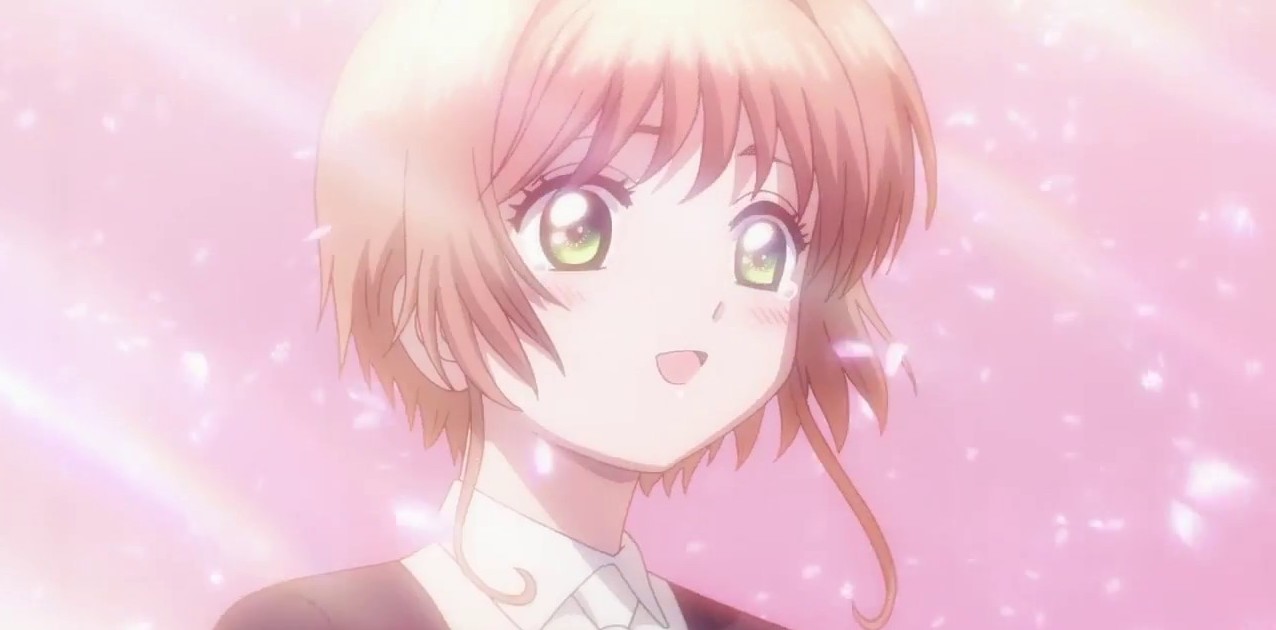Despite the show’s fantastical premise, there’s a much more subtle magic at work in both Cardcaptor Sakura series and its brand-new Clear Card Arc sequel: finding magic in the mundanity of everyday life. So much of the series revolves around actual, literal magic, but Sakura’s friends, family, and even her daily routine are just as important to her journey as any of her magical powers.
For the uninitiated, Cardcaptor Sakura was originally a manga created by the all-female creative team CLAMP, and later an anime produced by the insanely talented animation studio MADHOUSE. The series follows Sakura Kinomoto, your average, plucky fourth grader who finds herself in a pickle when she accidentally lets the Clow Cards — a deck of tarot-like magical cards — loose in her hometown and enchanted mischief ensues. With the help of her best friend Tomoyo Daidouji and rival-turned-love-interest Li Syaoran, she manages to capture them all and level-up her magical prowess in the meantime. The manga and show were an overwhelming success, becoming a cult classic must-watch for every fan of the Magical Girl genre. The series celebrated its 20th anniversary in 2016, and CLAMP debuted a new Cardcaptor Sakura manga focusing on Sakura in middle school. The new story was adapted into a brand new anime that reunited the original animation studio with the original cast of the 90s anime: Cardcaptor Sakura: The Clear Card Arc, which began airing in January 2018.
Sakura uses basic, ordinary items to perform her magic: a diary and key, a deck of cards, and a baton. The Book of Clow and the Clow Cards aren’t introduced with fanfare; Sakura discovers them shelved in her father’s messy study with complete silence from the soundtrack and minimal sound effects. Additionally, she uses her main magical tool — a small key that transforms into the Clow Wand — the same way she uses her cheerleading club practice baton. Sakura’s best friend Tomoyo even suggests using baton tricks she’s learned to add some aplomb to her card capturing. She also uses stunts she’s practiced in cheerleading and her PE classes to help with the tumbling required to capture a particularly lively card.
One of the big highlights that makes Cardcaptor Sakura such a special show are her outfits. Tomoyo hand-makes a new costume whenever she can to ensure Sakura is the best magical girl she can be. This set her apart from most other magical girl series — that along with having a new outfit almost every episode (an almost unheard of and incredibly difficult to accomplish task in animation), her clothes weren’t an effect of her magical powers. For a lot of Magical Girl series, the girl’s power is synonymous with her clothes. If she loses her powers, her outfit disappears and she’s back to being a regular girl à la Cinderella. But because her powers aren’t linked to her outfits, Sakura can be a magical girl while wearing a gorgeous couture gown, or she can be a magical girl while wearing her pajamas and slippers, it makes no difference.
 Sakura performing magic in her cheerleading uniform from the original manga,
Sakura performing magic in her cheerleading uniform from the original manga,
in her pajamas in the 90s anime, and in her school uniform in Clear Card Arc.
Small moments shared between friends and family are also a huge part of Cardcaptor Sakura. Sakura’s strong bonds with her classmates and family aren’t contingent upon their access to her magic-related problems. In comparison to the similarly iconic magical girl series Sailor Moon, Usagi’s non-magical classmates, such as Naru, are pushed aside and ultimately forgotten due to storylines focusing Usagi’s fellow Sailor Guardians or the monster of the week. Up until the very end of the series and flowing into Clear Card Arc, Sakura’s character is still defined by her relationship with her family and classmates. The time she shares with people closest to her are highlighted by slow panning cameras or a heavy emphasis on animation. Even though these moments aren’t related to Sakura’s magic, time slows down, showing that they are important and matter greatly to her. The episodes that seem to have the most dramatic tension are the ones where a card threatens that status quo she’s built with her friends and family (like when The Sword possesses her friend Rika and makes her attack the people around her, or when The Mirror tricks Sakura’s brother and causes him to hurt his leg). Sakura’s pivotal episodes aren’t about saving the world, but rather making sure her friends and family are safe. More than strong character-building events, these scenes demonstrate that Sakura’s relationships would still have existed even if the Clow Cards weren’t around.
 There are many characters that don’t know about the Clow Cards and Sakura’s magic powers, but they remain relevant and important in Sakura’s life through the entire the series!
There are many characters that don’t know about the Clow Cards and Sakura’s magic powers, but they remain relevant and important in Sakura’s life through the entire the series!
Love and romance play a central role in most Magical Girl series, and Cardcaptor Sakura is no different, although it approaches these topics differently. There is no “miracle romance” and Sakura’s final battles don’t hinge on rescuing a person she loves. The powerful positive or negative feelings attached to romance don’t have a dramatic effect on Sakura’s powers, nor does her ability to perform magic hinge on the power of friendship or love. Instead, love is handled separately from magic, but with as much grace and delicacy as the way magic is illustrated. When Sakura and Syaoran crush over Yukito, it’s shown with beautiful blooming florals. When Sakura runs into Yukito on her trip to school in the morning, the background paintings are always bright and sparkling. Pivotal scenes between Sakura and Syaoran are always lovingly handled and never rushed or sacrificed to make room for the action. The pacing slows, the orchestral soundtrack in the background plays warmly, the framing focuses on the smallest details like a nervous glance or a fidgeting hand, all building up to an equally powerful moment in the narrative that rivals Sakura’s most dramatic moments in magic.
Thanks to CLAMP’s amazing storytelling skills in the manga, even simple dialogue between characters that love each other get gloriously detailed splash pages to show how momentous and special those moments are. Paired with MADHOUSE’s quality animation, every second is planned and every detail is attended to with utmost care and precision. Series director Morio Asaka directed both the original series and the sequel. Asaka helped bring CLAMP’s vision to life in Cardcaptor Sakura, dedicating precious airtime to making sure the small moments shared just as much significance as the action scenes, and brings that same charm to Clear Card Arc as well. In doing so, we see that magic and the mundane are equal, and from that we can believe that the ordinary is just as important as the extraordinary, or is magical all on its own.
The idea of finding magic in the seemingly mundane parts of your life is something that sticks with you through adulthood. In times of frustration, where each day feels more trying than the last, Cardcaptor Sakura teaches in finding joy in simple moments of peace. Sharing cake with a friend, a simple moment shared with someone you like, or a calming walk by yourself on a sunny day gives you magic and motivation to keep going forward.






